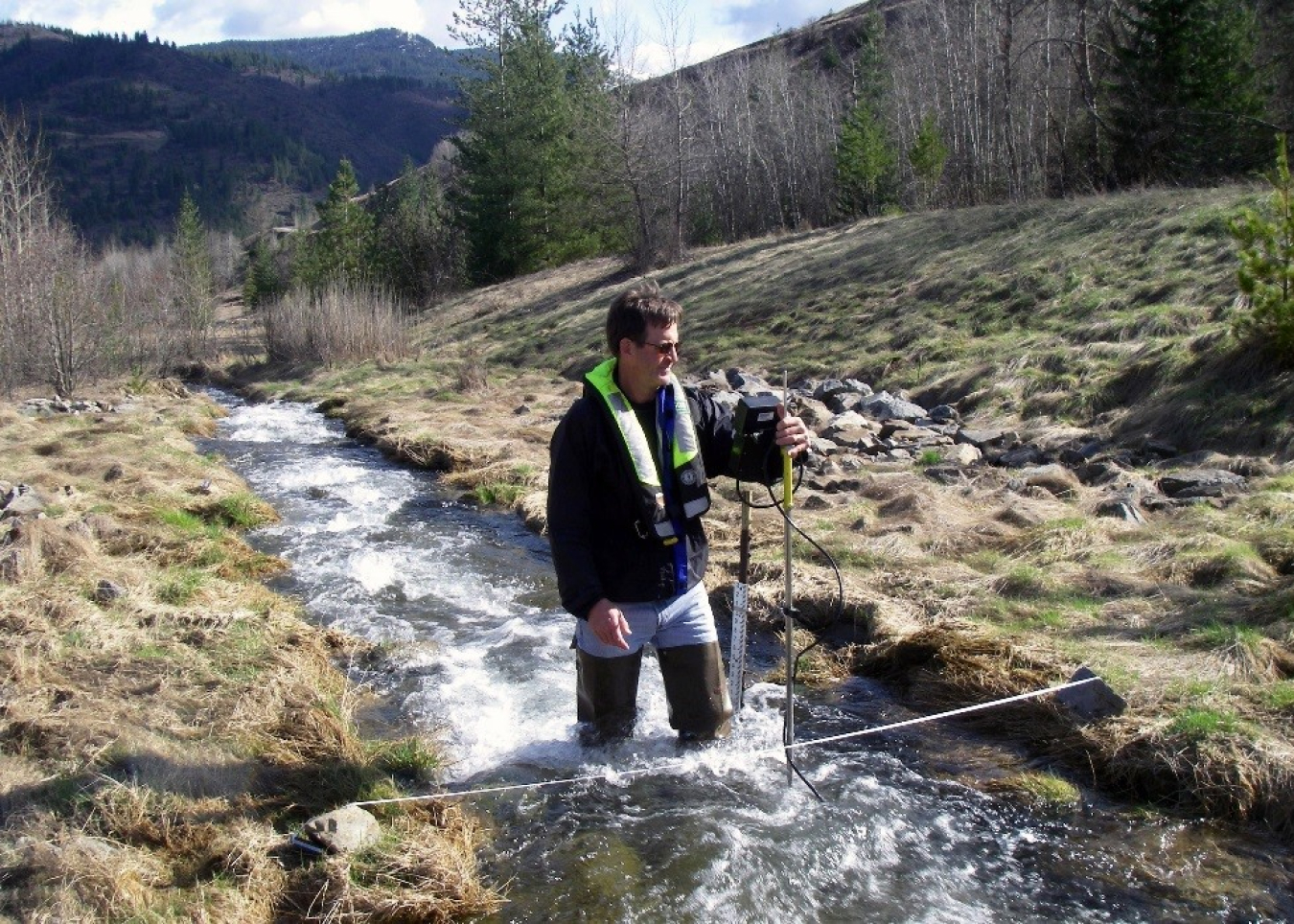
Photo courtesy of the U.S. Geological Service.
The job of physical scientist is a mid-level position in bioenergy, in the agriculture, life, and physical sciences career sub-sector. Job seekers with agriculture, life, and physical sciences backgrounds or a career in the sciences could consider this type of mid-level bioenergy job.
Physical scientists work under supervision to analyze environmental problems and develop plans to inform policymakers and regional planners on potential outcomes of bioenergy deployment. They also assist other environmental specialists to collect and compile environmental data from samples, conduct surveys, and gather other information to identify and assess the benefits and considerations of natural resources impacted by bioenergy. People in these positions may have careers in bioenergy physical science.
Physical Scientist
| Alternate Title(s) | Chemist, Environmental Scientist, GIS Specialist, Hydrologist, Hydrogeologist, Water Resource Specialist, Soil Scientist, Soil Conservationist |
| Education & Training Level Description | Master's degree in the Physical or Natural Sciences, Engineering, or a related field. |
| Experience | 3–7 years |
| Job Skills |
|
| Job Profile | Bioenergy crop production systems involve complex interactions with the physical environment in which these crops are grown. Plants require water resources and nutrients present in the soil for growth. The expansion of biomass production will require individuals with a thorough understanding of agricultural management practices that are not only economical for producers and growers but also sustain important physical components of the environment such as soil and water. Physical scientists can provide this expertise, using their knowledge of the earth, its components, and its processes to guide important land management decisions. They are also uniquely qualified to work along many other components of the bioenergy supply chain, as their knowledge of the chemical sciences has important applications for the sector’s engineering and manufacturing activities. As such, there are a broad range of pathways that they can follow. Examples of bioenergy related careers in the physical sciences include: Chemical Scientists Hydrologists Soil Scientists Environmental Scientists At the middle levels, Physical Scientists work as staff specialists under the direction of senior management to help develop strategies and tools for producing biomass feedstocks while maintaining or enhancing soil quality and ecosystem services, as well as investigate opportunities for bioenergy crops to improve water quality. Individuals pursuing the chemical scientist route will also work alongside senior level scientists to help improve applicable chemical processes, develop novel bioproducts, and ensure the end product meets quality specifications. A masters's degree in the physical or natural sciences, or engineering (e.g. chemistry, hydrology, environmental science, soil science or agricultural sciences) is highly preferred. Equivalent experience or training may substitute for a masters degree. |
More Mid-Level Agriculture, Life, and Physical Sciences Jobs in Bioenergy
Related Bioenergy Career Resources
Bioenergy Career Exploration Wheel
